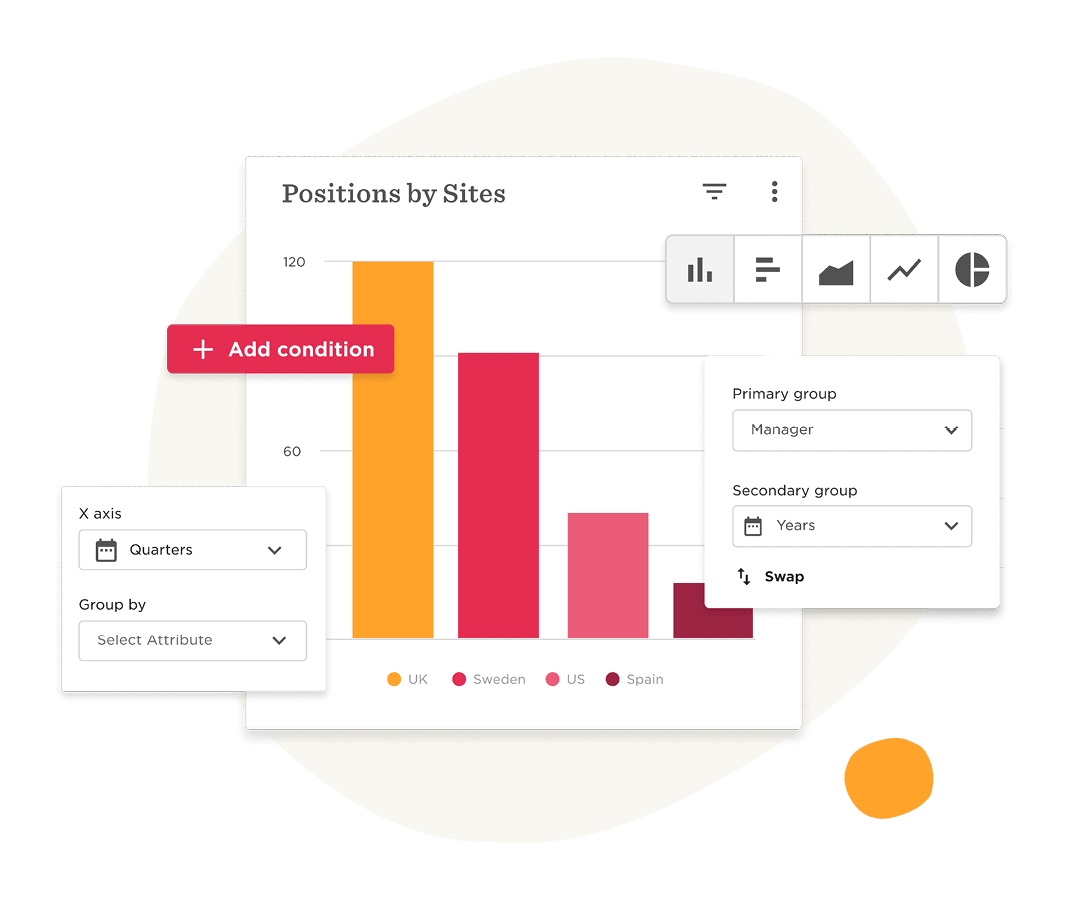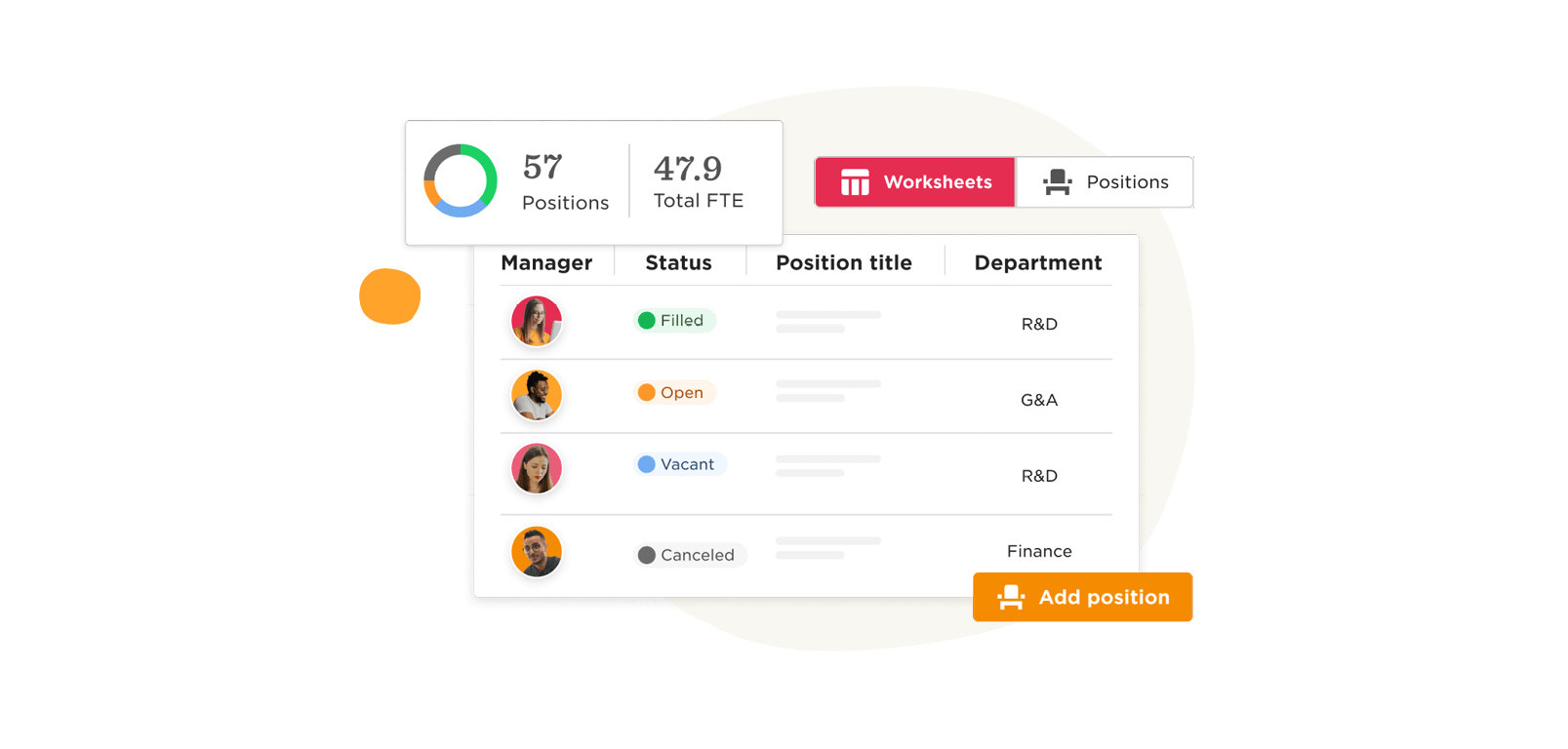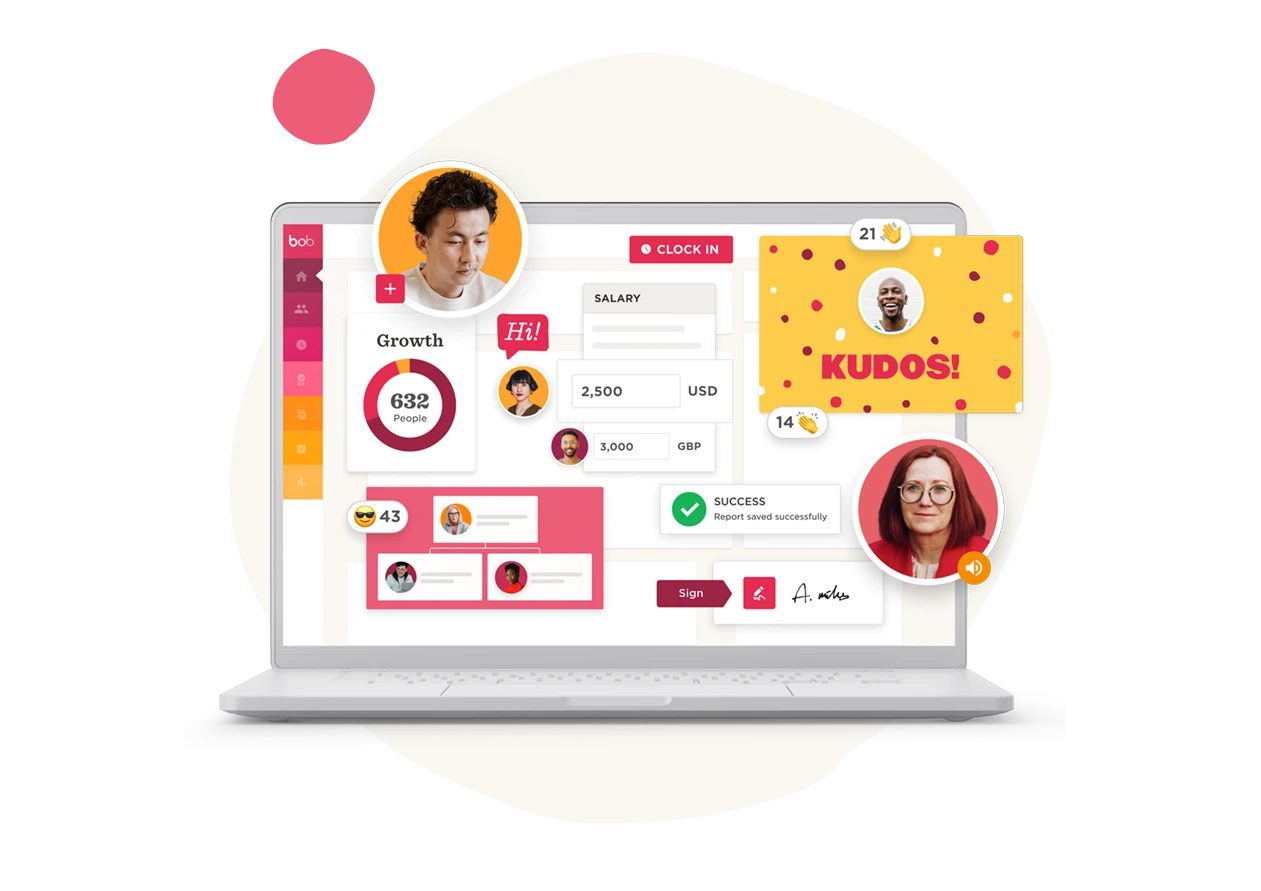Introduction
Implementing new HR software is a massive undertaking for any company. It starts with the selection process, where companies review numerous RFPs and watch demos of different HR solutions. Then there’s the actual investment—both the significant financial outlay and the time spent—including learning how to use the new HR software, inputting your HR data, modifying your HR processes, and running company-wide training sessions on how to use the new software to ensure that all stakeholders adopt it in their day-to-day work. This often lengthy selection and implementation process involves decisions and approvals from leaders across the company, including several non-HR C-level executives, such as the CEO and CFO.
While the relationship between the CFO and HR traditionally lay in payroll and involved cooperation on a bi-weekly or monthly basis when salaries were paid, this has changed in recent years. New research from HiBob in 2022 reveals that more than 68 percent of CFOs collaborate with HR at least once a week and that their main areas of discussion include benefits and rewards (11 percent) and business strategy/growth strategy (10 percent).
As partners in strategic business decisions, the CFO and HR have an important role to play when choosing an HCM. So, with that in mind, let’s look at how an HCM like Bob supports CFOs as well as CPOs in the modern workplace. We’ll cover data and insights for strategic decision-making and reporting, ensuring compliance for public companies, running compensation cycles, and ultimately increasing efficiency and saving time.
Purchasing HR tech: the CFO and the decision-making process
Purchasing HR software involves a significant outlay for companies, and the CFO is typically the principal stakeholder in approving the budget. During times of economic uncertainty, companies may think twice about whether it’s the right time to make such an investment.
The CFO will base their decision of whether to invest in an HR solution on two principal factors:
- The cost and potential return on investment for the company
- Whether the HCM offers functionalities that the CFO needs
When it comes to cost, while the investment is sizable, an HCM helps to increase efficiency by automating many processes that can take up hours for both HR professionals and members of the finance team. These include onboarding new hires, running performance review cycles, managing payroll across multiple sites, and compensation cycles. Having an HCM reduces the time spent manually managing these tasks and can even save a company the cost of hiring an employee for this role. Regarding return on investment, HiBob customer, Uala, achieved an incredible 405 percent ROI from implementing Bob and recovered its initial investment less than three months after deployment, clearly proving its worth. As a CPO, you’ll need to position your request for a new HCM with ROI in mind when getting buy-in from finance.
When it comes to functionality, an HCM should provide essential data for the CFO as the person responsible for building budgets. For example, when examining where the company should expand and allocate resources for the coming year, access to up-to-date people data on the average salary per function for each of the company’s sites is key for building this information into a strategic plan on where to grow and how to shift people across the company. Therefore, an HCM that provides accurate HR metrics is crucial to the CFO’s role. More on that further down in this guide.
During times of recession, when there’s a greater focus on headcount, having a workforce planning tool that provides a detailed view of the organization and can help with position management and planning for different events is also critical for a CFO. And even when companies face the difficult decision of downsizing, an HCM that engages their people and helps build a warm culture is crucial for employee wellbeing and can positively impact retention, which is so important during these uncertain times.

HR Analytics: dashboards for tracking trends and reporting
An HCM with real-time dashboards, HR analytics, and the capability to create reports easily is a must for the CFO and finance team. In fact, according to HiBob research, 19 percent of CFOs say they track and report over 16 KPIs as part of their role. Dashboards provide the data CFOs need without having to search through spreadsheets and devising complicated formulae—eliminating the risk of human error.
Bob’s Analytics provides the HR metrics that a CFO needs continuously, such as attrition rate, average salary per function and per geography, reasons why people leave, and the average tenure of different functions, all easily accessible and without needing to rely on other teams within the organization.

Reporting for IPO preparation and publicly-traded companies
When preparing for an IPO, companies must collect and submit a considerable amount of data on their people and financials, which continues even after a company goes public. For example, all publicly traded US companies must comply with the Sarbanes–Oxley Act of 2002 (SOX), which regulates how companies report financial results and disclose executive compensation.
All public companies are also subject to annual audits, which involve providing up-to-date people data, such as headcount, employee turnover, new hires, attrition, and financial reporting, including full disclosure of their compensation data. They are also required to report to their shareholders and may need to provide data on pay equity, gender pay gap, and race and ethnic diversity. This is also a requirement for all companies of a specific size in various countries, such as Australia and the UK.
Bob’s Analytics includes real-time dashboards on growth, retention, finance, and positions management, giving CFOs the data they need to make strategic decisions and for reporting. All the data is stored in one place, saving considerable time and effort.
Sharon Steiner, CHRO at Fiverr, explains, “As a publicly held company, I need to present HR data every quarter to the compensation committee and the Board. Bob makes it simple, providing all of the data that I need in an easy-to-understand format.”

Compensation Management: simplifying global compensation and ensuring fair pay
While compensation adjustments may only occur two to three times a year, managing them is a complex and detail-oriented task overseen by a company’s CFO. Traditionally managed using spreadsheets and prone to human error, the process is further complicated in global companies when multiple currencies are involved.
Bob’s Compensation Management module was built to solve this pain point. Designed for multi-national organizations, it simplifies the allocation of base pay, bonus, and equity plans across international teams through multiple currency management, localized currency views, and local salary benchmarks. This way, all relevant stakeholders in a compensation cycle—from HR to finance to managers—can track approvals and view salary increases and bonuses either in the local currency or in one unified currency, helping them meet their budgets, easing the process, and saving time.

Staying competitive using Compensation Benchmarking Powered by Mercer
There’s a lot of buzz these days about equitable pay and eliminating pay gaps based on gender, ethnicity, geography, or other factors. Recently, many US states have introduced new salary transparency laws requiring companies to list salary ranges on job ads that help protect prospective employees from discrimination and exploitation. This is a giant step forward. Ensuring fair pay is also crucial for retaining your employees who, if they feel they are not compensated according to the market rate, may decide to get up and leave.
Using a reputable benchmarking tool, companies can match internal jobs with similar jobs in the market and ensure that they are paying their people according to the market rate while also considering other relevant factors, such as geographic location, years of experience, education level, and company size.
With Bob’s strategic alliance with Mercer, CFOs, members of the finance team, and HR can use Mercer’s compensation benchmarking data directly within Bob. Mercer’s data is collected from over 115 million people worldwide across 130+ countries and updated every quarter, providing unparalleled global compensation data for Bob customers. And while Compensation Benchmarking Powered by Mercer is an invaluable tool to use when running compensation cycles, it’s not dependent on having Bob’s Compensation Management module—you can simply download the reports to your computer and use them in tandem.

Recommended For Further Reading
Workforce Planning: optimize productivity and prepare for workforce changes
Both in times of recession and plenty, a workforce planning tool is invaluable for the CFO for viewing current headcount and building budgets for the upcoming quarter or year. It can also help the CFO decide where and when to open new legal entities worldwide, depending on the number of employees in that region. Planning headcount with spreadsheets is cumbersome and doesn’t allow for multiple strategies and eventualities.
Bob’s Workforce Planning enables CFOs, hiring managers, and other relevant stakeholders to have a single view of the open positions in the company and add, edit, postpone, or cancel positions as needed. It also supports creating multiple headcount plans for different events or strategies—such as opening a new site, an M&A, or a reorganization—so you can implement the plan that best fits your business goals.
With your workforce data on headcount, growth, internal mobility, and compensation easily accessible in Bob, hiring decisions can be better planned, more strategic, and organized in one centralized location.

An essential tool for managing modern companies
Implementing a new HCM is a huge decision that involves the buy-in of C-level executives from the CPO to the CFO. While involving a significant financial outlay, an HCM helps companies to automate and streamline recurring and time-consuming processes from onboarding to payroll to compensation management. It also provides an unparalleled source of people and financial data, benefitting the CPO and CFO alike. Having a powerful HR platform like Bob pays dividends in improving efficiency and engaging your people with a great employee experience, ultimately contributing to increased retention, a goal for companies across the board, especially in these challenging times.

